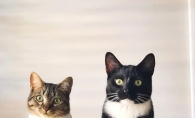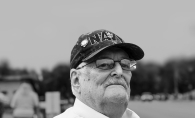It could be argued that Marina Castillo only creates self-portraits. As a photographer and mixed-media artist, her work is deeply reflective of her culture, her faith and her passion, which manifests itself physically. “I start to sweat,” Castillo says. “I feel the sweat coming down my back when I’m trying to get a photograph. It’s just that intense for me.” She says her photographs mirror herself. “It’s really who I am,” Castillo says.
No category escapes Castillo’s lens. From local wildlife and nature to traditional Mexican celebrations, she finds herself in it all. Her work has been published in local newspapers like the St. Paul Voice/La Voz Latina and magazines including Digital Photographer. Castillo stretches her creativity to include acrylic, oil and watercolor paintings; chalk and pencil sketches; three-dimensional projects (including natural stone-crafted pieces illustrating the Virgin Mary), and, to a lesser degree, greeting cards, jewelry, ceramics and beaded items.
Castillo has shown her art in galleries and exhibits—100 pieces were on display at Cherokee Park United Church in Saint Paul—and her series of sugar skulls was presented at the Minnesota History Center. Sugar skulls play a role in Día de los Muertos (Day of the Dead), a Mexican holiday to remember deceased friends and family. As Castillo created her sugar skulls, they evoked memories of her father, a brother and an uncle, moving her to weep as she worked. “They are more than just art pieces to me,” she says, with resurfaced emotion. “They are part of me.”
There are many parts to Castillo, including being a wife, mother, licensed social worker, licensed teacher, and certified marriage and family therapist. She is the site lead therapist at Green Central Park Elementary School in Minneapolis, where she assists children 4 to 12 years old and their families, some sharing their immigration stories with her. Castillo connects with those often painful narratives on professional and personal levels.
Castillo was born in Tijuana/Baja California, Mexico, and was raised in Corona, California, with six brothers and sisters. “My mom Josefa is very creative and used to design all of my clothes and my sisters’ clothing, as well,” she says. “My dad Elias is also very creative, was a tailor at a young age, barber to many relatives, self-taught mechanic, mason and more, so I come from very creative parents.” Her father came to the United States on a labor visa to work as a field laborer, and Castillo became a citizen when she was 18 years old. The road to assimilation wasn’t always smooth and straight, she says.
There was a bright spot for Castillo, as she discovered her artistry at a young age. “I was a photographer since I could hold a 110 [film] camera,” she says. “It was like my right hand. I’ve always had a passion for art.” Summertime found her in summer school. “I loved it because there was a lot of art and art contests,” she says. “I’d always win.” Castillo wasn’t concerned about winning or the prizes. “I just wanted to do my own thing,” she says.
Later, doing her own thing included receiving a teaching degree from the University of North Dakota, and master’s degree in counseling psychology from the University of St. Thomas. Interestingly, throughout Castillo’s extensive higher education, she says, “I’ve never set foot in an art class.” Clearly, it didn’t prevent Castillo’s innate creativity from finding avenues for expression.
“What really inspires me is my culture,” Castillo says. “I love sharing my culture with people.” While she enjoys celebrating her Mexican heritage, Castillo is even more passionate about illustrating the struggles of Mexican immigrants. During a recent trip to California, Castillo stood before a fence at United States-Mexican border, where crosses hung in remembrance of those who have died. As she drove along miles of agricultural fields, she says, “I saw my people working in the fields in the scorching heat.” The scene must have pushed forward memories of herself as a young girl, toiling under that same sun in onion and grape fields, despite her parents’ hope that her hands would never harvest. It’s a memory she’s not afraid to share.
“I believe that my life's journey is leading me to a path that helps my people have a voice through my art,” she says, “the struggles and hardships told through telling the stories of my people in the fields that feed America. Much of the art I’m currently working on is mixed-media three-dimensional pieces that include stories of my people’s culture and struggles.” Castillo’s faith is also reflected in her work. “It plays a huge part,” she says of her faith. “My spirituality is a huge part of me. It’s about why I was put here.”
If her heritage and faith are the primary focuses in her art, color runs a close second. Bold, strong colors permeate Castillo’s work like blood coursing through the artist’s veins. “I feel color inside of me,” she says of her creative energy. “Turquoise makes my heart sing. It really does something to my spirit.”
Castillo’s spirit continues to seek new ways to communicate through her art. During a trip to Mexico this summer, Castillo says she had the opportunity “to photograph my people in their villages, [photograph] the food and the beauty of the country.” She wants to share their stories with America in a way that helps America understand “my people do not come here to take others’ jobs, but rather to help their families survive the poverty,” Castillo says, adding, “Whether it be through art or photography, I want to tell the stories in an artistic way.”
See more of Marina Castillo's work at her website here, or contact her at marinacastilloart@gmail.com.









